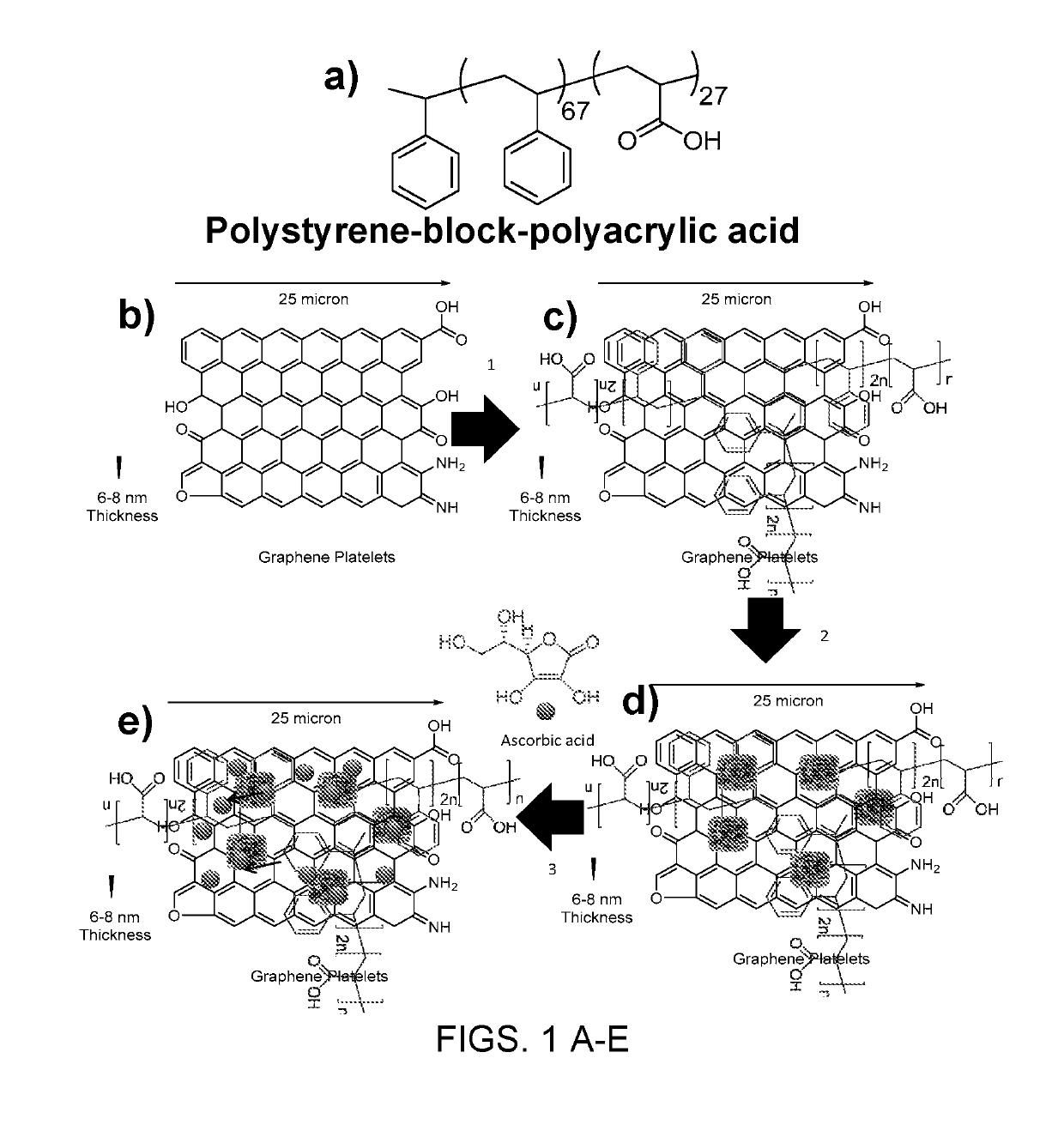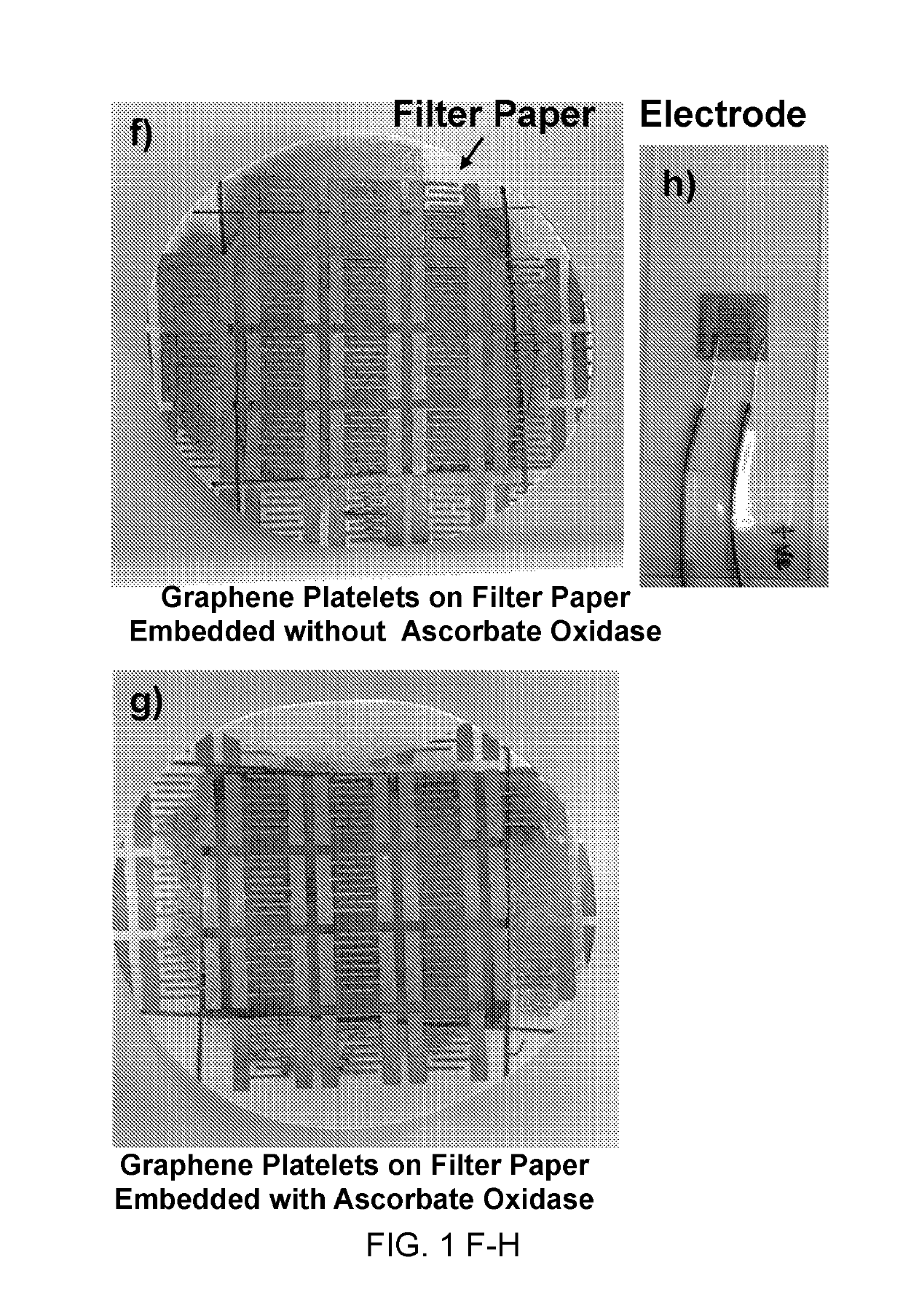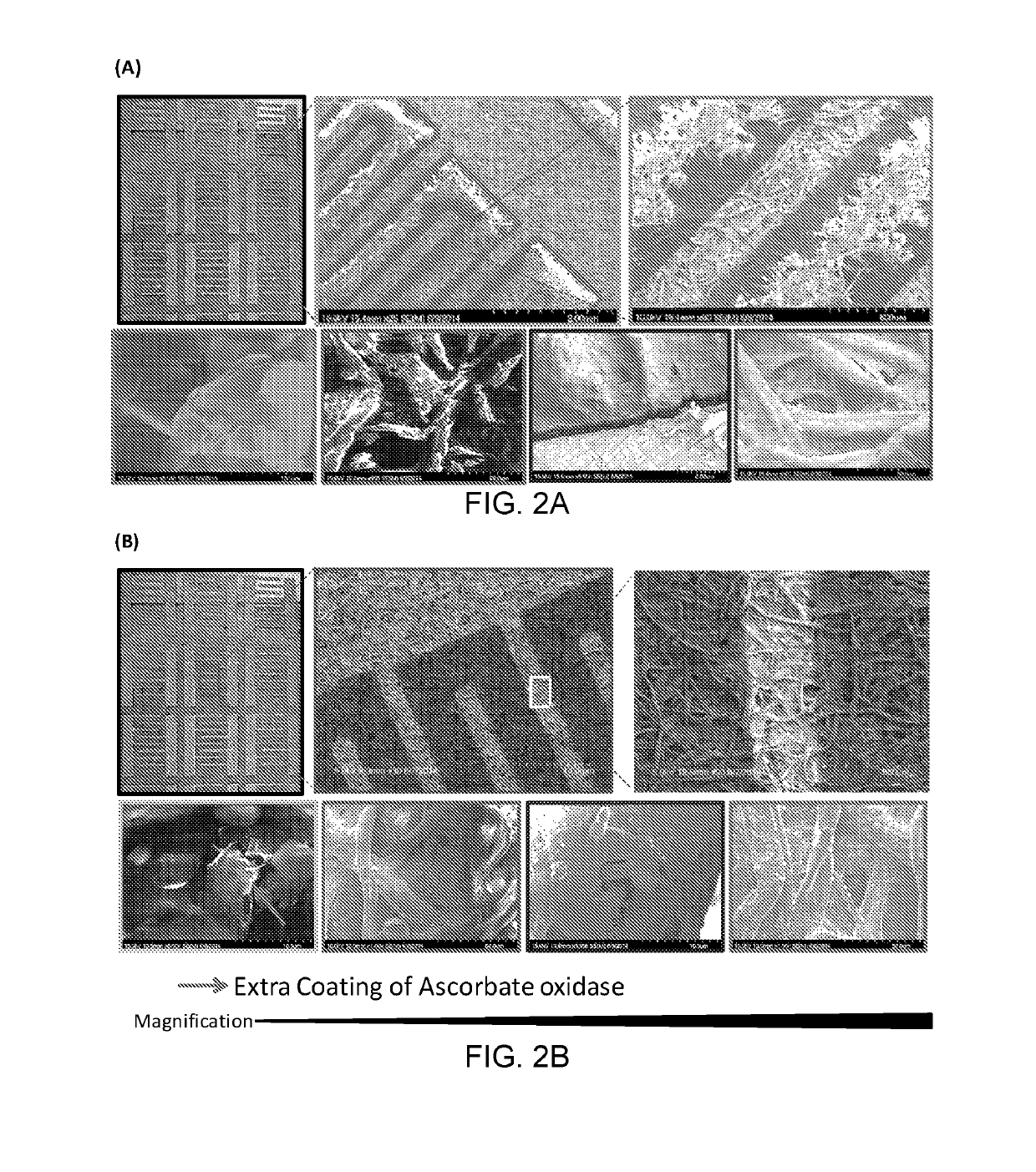Analyte sensing for eye injuries and conditions
analyte sensing and eye injury technology, applied in the field of eye injuries and conditions, can solve the problems of limiting the ability of primary care providers to adequately diagnose, triage, or manage complicated ocular conditions, subjective seidel test, etc., and achieve the effect of diagnosing eye conditions
- Summary
- Abstract
- Description
- Claims
- Application Information
AI Technical Summary
Benefits of technology
Problems solved by technology
Method used
Image
Examples
example 1
[0115]GR-Polymer Composites for Preparation of Conductive Filter Paper
[0116]Graphene is a zero-overlap semimetal with both holes and electrons as charge carriers infers very high electrical conductivity. In graphene, 3 other carbon atoms connected to each carbon in two dimensional plane, while 1 electron (π) freely available in the third dimension, above and below the graphene sheet for electronic conduction. The electronic properties of graphene are dictated by the valance and conduction bands (bonding and anti-bonding) of these pi orbitals.
[0117]Dirac points in graphene (electrons and holes) have zero effective mass and the energy-movement relation (the spectrum for excitations) is linear for low energies near the 6 individual corners of the Brillouin zone. At the Dirac points, electronic conductivity is actually quite low due to the zero density of states. But the doping with electrons or holes, the Fermi level can be changed to create a material that is potentially better at con...
example 2
[0132]A point-of-service biosensor device to measure AA concentration in the human ocular tear film that can be translated to clinical use for evaluation of the anterior of anterior ocular wounds was developed. A power analysis suggested that 15 samples would be needed to achieve <5% standard error of mean (SEM) for the biosensor compared to colorimetric test. The aqueous humor AA concentration of 23 μM and standard deviation (SD) of 9.6 μM for healthy individuals is considered for the calculation. Samples of aqueous humor were collected and sent to the research laboratory for testing. The samples were collected from patients with localized retinal detachments who were scheduled for therapeutic paracentesis to release intraocular pressure after therapeutic pneumatic retinopexy as standard of care. The fluid was removed in a controlled clinical setting after placement of a topical anesthetic drop of proparacaine and antibiotic drop of ocufloxacin on the cornea of the patient. The flu...
PUM
| Property | Measurement | Unit |
|---|---|---|
| temperature | aaaaa | aaaaa |
| density | aaaaa | aaaaa |
| diameter | aaaaa | aaaaa |
Abstract
Description
Claims
Application Information
 Login to View More
Login to View More - R&D
- Intellectual Property
- Life Sciences
- Materials
- Tech Scout
- Unparalleled Data Quality
- Higher Quality Content
- 60% Fewer Hallucinations
Browse by: Latest US Patents, China's latest patents, Technical Efficacy Thesaurus, Application Domain, Technology Topic, Popular Technical Reports.
© 2025 PatSnap. All rights reserved.Legal|Privacy policy|Modern Slavery Act Transparency Statement|Sitemap|About US| Contact US: help@patsnap.com



